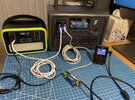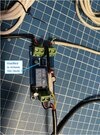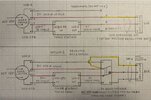DigitalCorpus
Active Member
- Joined
- Oct 17, 2023
- Messages
- 112
- Reaction score
- 71
- Location
- California
- Country
- United States
- Dash Cam
- Vantrue N4 Pro
Didn’t think of looking for their website, but anyhow, that works out. So, 130 W input total on a single unit. Doing a form of what @GPak suggested should work for charging all three.
I’d need to charge 2 of them @ 130 W and then plumb those two into the third to charge it in order to keep all of them topped off. Then again, a boost converter to up the voltage to 16-16.5 V and then run that power to the trunk and plumb that into all 3 to charge them and then just use the type C jack to power the dash cam/DVR.
I look forward to the testing. I need to make sure my uneven trunk floor will suit the 322 Whr packs. I already know I need to stack them if I use 3.
I’d need to charge 2 of them @ 130 W and then plumb those two into the third to charge it in order to keep all of them topped off. Then again, a boost converter to up the voltage to 16-16.5 V and then run that power to the trunk and plumb that into all 3 to charge them and then just use the type C jack to power the dash cam/DVR.
I look forward to the testing. I need to make sure my uneven trunk floor will suit the 322 Whr packs. I already know I need to stack them if I use 3.



